Advertisement
The headwinds and tailwinds affecting offshore wind in the Northeast, explained
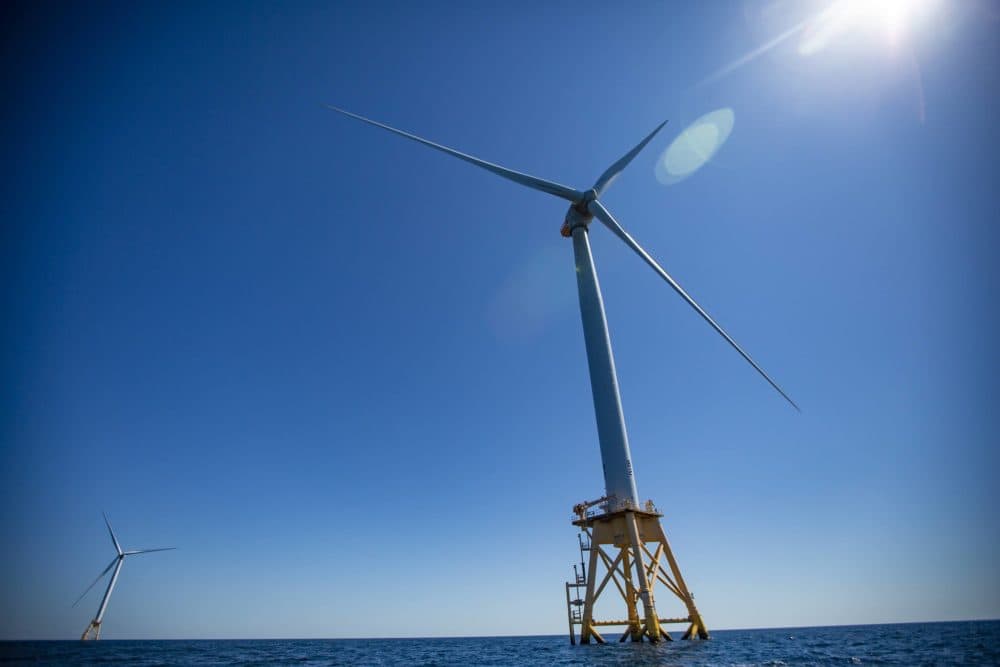
There’s a lot happening in the offshore wind world right now, especially in the Northeast. And depending on what articles you read, the industry is booming or teetering on financial failure.
The reality is probably somewhere in between. There are headwinds and tailwinds, producing what one person in the industry described as “whiplash in headlines.”
Making sense of it all can be tough. But the stakes are high: Climate change is happening and electricity demand in the region is projected to rise precipitously over the next decade as people buy electric vehicles and heat pumps.
Several New England states, plus New York and New Jersey, are counting on offshore wind to help meet their decarbonization and electrification goals — not to mention banking on the industry to create clean energy jobs and revitalize once-thriving port cities like New Bedford and New London.
A year and a half ago, things looked rosy for offshore wind. States signed 20-year contracts for cheap electricity. Companies announced or started to build manufacturing facilities to help create a domestic supply chain for the industry. Even the Cape Wind controversy of the 2010s seemed more and more like a hiccup in the story of the American offshore wind revolution.
But then came a global inflation crisis, new supply chain disruptions and a growing movement of people calling for a pause on offshore wind development as dead humpback whales washed up on beaches.
To get a full picture of where the industry stands in late 2023, here’s what you need to know:
New turbines are going up
Despite the challenges facing the industry, the news is positive when it comes to Vineyard Wind 1, the country’s first commercial-scale offshore wind farm. The 62-turbine project is under construction in the water about 15 miles from Martha’s Vineyard, and the first electrons are expected to flow into the grid by December. By the time it’s fully up and running next year, the 800 megawatt project should produce enough electricity to power 400,000 homes in Massachusetts.
Several miles west, closer to Long Island, offshore construction for the 12-turbine, 132 megawatt South Fork Wind farm is also underway. Its developers anticipate delivering some power to their New York customers by the end of the year.
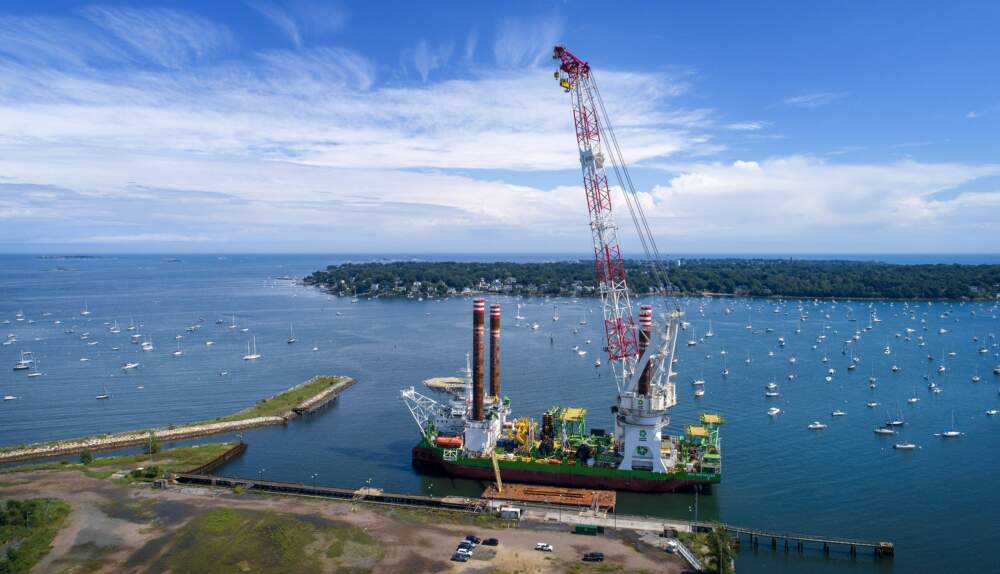
There are seven offshore wind turbines operating in the U.S. — five near Block Island and two off the Virginia coast. Together, they can generate 42 megawatts of power. With the addition of Vineyard Wind 1 and South Fork Wind, the country will have 81 turbines capable of producing nearly a gigawatt — or 1,000 megawatts — of power.
That's a far cry from the Biden administration’s goal of 30 gigawatts by 2030, but it’s a step. And industry experts and clean energy advocates say the progress on these two first projects should not be understated; getting to this point was never a sure thing.
“We should not lose sight of the fact that Vineyard Wind was not inevitable,” said Amy Boyd Rabin, vice president of policy at the Environmental League of Massachusetts. “It is a very big deal and should be celebrated as such.”
Economic woes and canceled contracts
The future of subsequent projects in the Northeast pipeline, however, is much more uncertain. These projects face a lot of economic issues — inflation, rising interest rates and supply chain disruptions or backlogs. Long permitting timelines and a failure by industry leaders and state officials to build in buffers for economic turbulence, also played a role.
“This is a real moment of crisis for the industry,” said Amber Hewett, a senior director at the National Wildlife Federation. “I believe the industry will endure, but the question is when and at what scale.”
The problems began about a year ago when offshore wind developer Avangrid began sounding the alarm about the ballooning costs of its 1,200 megawatt project known as Commonwealth Wind. The company said the project was “no longer viable” under the terms of its existing contracts with electric utilities because it would be unable to secure financing. Another developer, SouthCoast Wind (formerly Mayflower Wind) also said its own 1,200 megawatt project could be at risk.
Advertisement
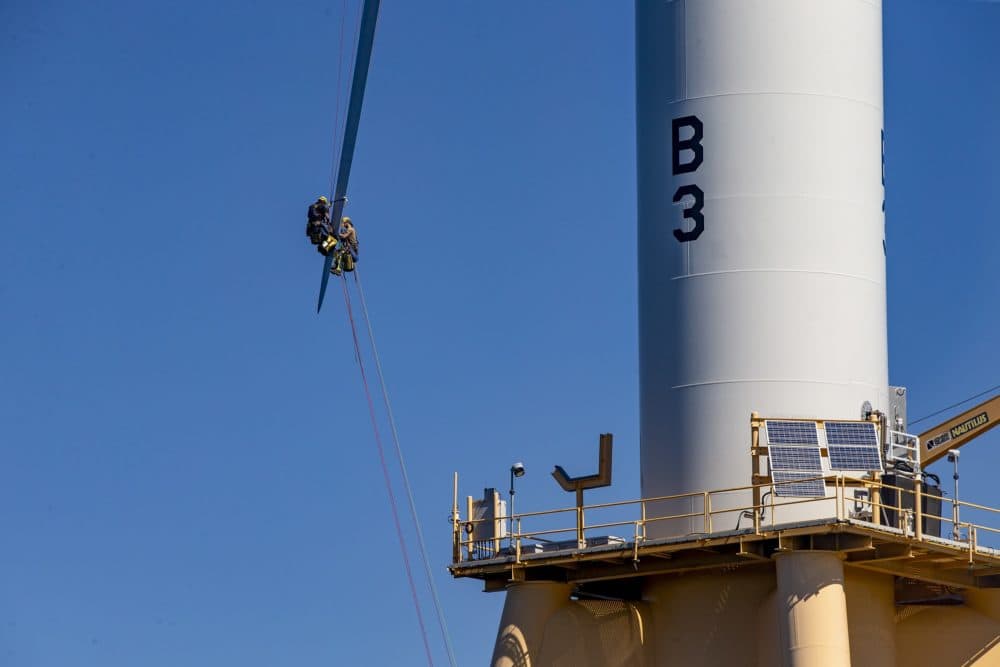
Offshore wind farms cost billions to build, so even a small rise in interest rates or material costs can send the price tag soaring. This is exactly what happened to Commonwealth and SouthCoast Wind. To remedy the situation, the companies asked to renegotiate the 20-year contracts they signed with the state’s three big utilities so they could charge more for the electricity they plan to deliver.
That led to quite a bit of back and forth, which you can read about here.
In the end, the state allowed the two companies to cancel their contracts and pay a termination fee — Avangrid paid $48 million and SouthCoast paid $60 million.
Even though the power purchase contracts were canceled, the projects were not. Avangrid and SouthCoast Wind both say they fully intend to build these projects and deliver clean power. They’re moving forward with the federal permitting process and plan to re-bid the projects at a higher cost.
Can the Northeast still meet its wind goals?
With those contracts canceled, the state suddenly went from having 3,200 megawatt of offshore wind energy in the pipeline to just 800 from Vineyard Wind 1. For Massachusetts to meet its clean energy goals, it’s supposed to have 5,600 megawatt of offshore wind under contract by 2027.
“We are experiencing a setback, but so is almost every offshore wind project across the globe,” said Sen. Mike Barrett, co-chair of the state’s Legislature's Telecommunications, Utilities, and Energy Committee.
He’s right; these struggles are not unique to Massachusetts. The developers behind four projects in New York have asked the state to adjust their contracts. New Jersey lawmakers passed a bill this summer to help another troubled project with its federal financing. And earlier this week, Avangrid canceled its contract for an 800 megawatt project in Connecticut.
Even in Northern Europe, where offshore wind turbines have been in the water for decades, upcoming projects face economic challenges and potential delays.
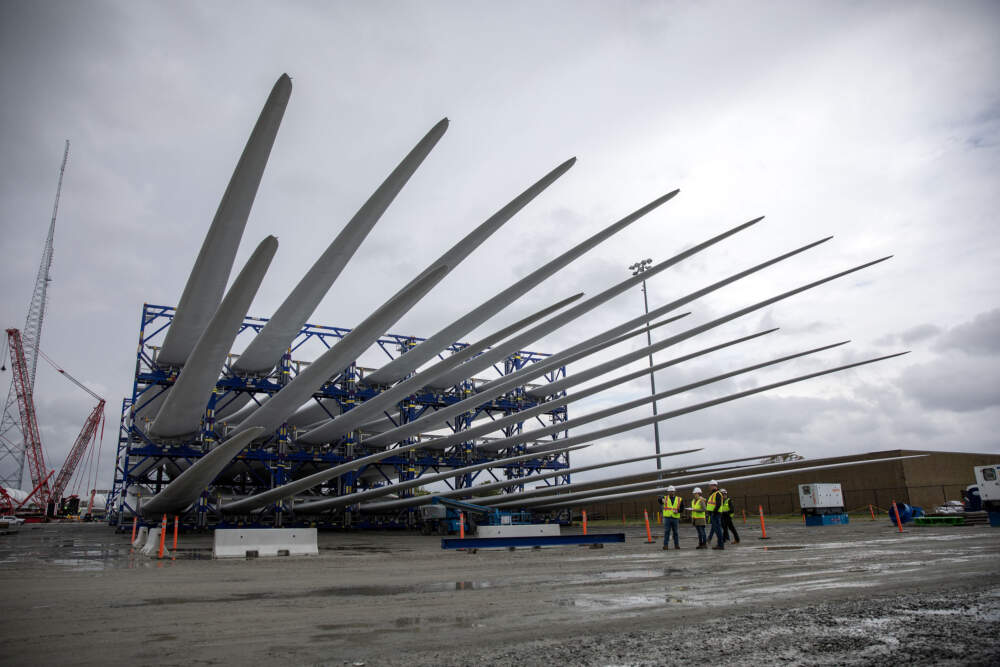
But several experts WBUR spoke with insisted that the industry is not doomed.
“When it comes to offshore wind, I’m always nervous and always optimistic,” Hewett said. “This is not indicative of this industry not being all it’s cracked up to be. It’s the reality of trying to launch an industry this big, this fast.”
In the meantime, Northeast states have appealed to the federal government for help. Six governors recently penned a letter to the Biden administration, asking for, among other things, more certainty about how offshore wind developers can qualify for extra tax breaks within the Inflation Reduction Act. They also want a faster federal permitting process so that developers can start arranging their financing and securing materials before the economic climate changes.
“We urgently need prompt federal action to ensure that States can move forward now
with offshore wind projects that will deliver significant domestic manufacturing, labor, and community benefits for both current and future generations,” the letter stated.
All eyes are on the next round of bids
Amid the chaos and uncertainty of the last year, East Coast states remain committed to building an offshore wind industry. In Massachusetts, the state’s Department of Energy Resources recently launched its fourth round of project solicitations. The goal is to procure 3,600 megawatt of wind — though presumably, 2,400 megawatt of that will be from the Commonwealth and SouthCoast projects.
Bids are due at the end of January, and no one is quite sure what to expect. If the bids are too expensive, Massachusetts could pass on all the proposed projects, just as Rhode Island did recently.
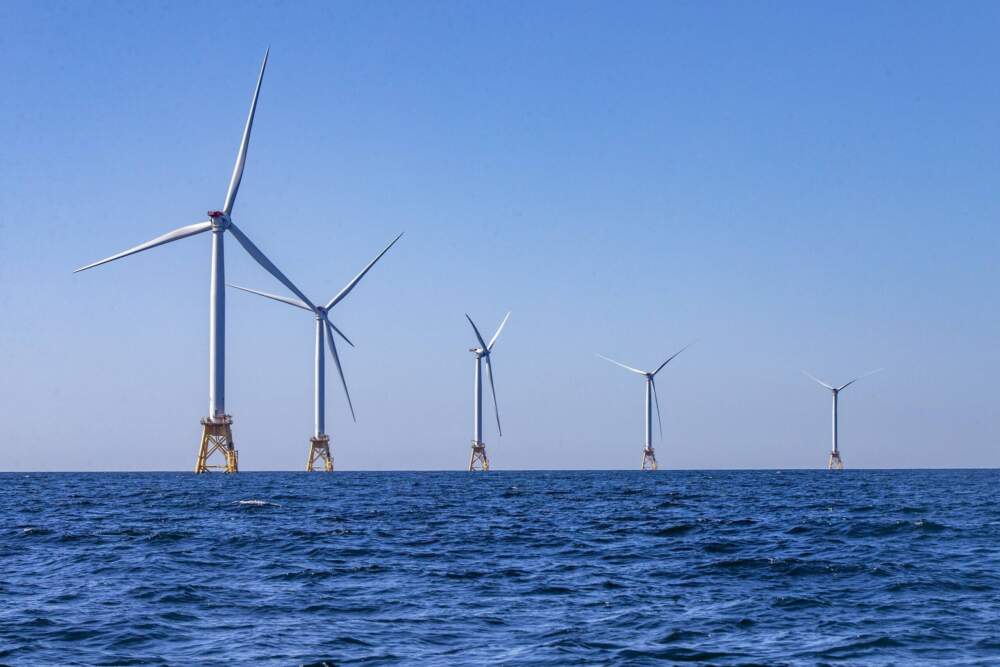
While it would be disappointing if the state’s procurement yielded no good bids, Barrett said he’s more concerned about how the financial woes of the industry will impact peoples’ electric bills.
“I do not want us to feel the pressure to lock in additional megawatts of offshore wind if the price is going to be high,” Barrett said. Massachusetts has ambitious electrification goals, and high electric prices, he worries, could disincentivize people from swapping fossil-fuel powered cars and home heating systems for electric ones.
“We’ve gotta get offshore wind in here,” he said. “But it doesn’t have to happen exactly on time, as long as it happens more or less on time.”
A new multi-state collaboration
There is one new factor that could affect how future projects are selected and priced: interstate collaboration.
On Wednesday, Gov. Maura Healey announced that Massachusetts, Connecticut and Rhode Island will coordinate during the next round of procurements.
Together, the three states are looking for about 6,000 megawatts of power.
“Working together, through this new agreement, we can align our procurements to
leverage our collective buying power,” Healey said. “We can lower project costs and maximize benefits for ratepayers across the region. And we can increase efficiencies and reduce project risk for offshore wind developers.”
The hope is a combined bidding process will help developers take advantage of economies of scale and streamline the permitting and project siting process, potentially helping projects move to construction faster and with a cheaper price tag.
And then there are the lawsuits…
Economics aren't the only thing threatening the nascent offshore wind industry. Vineyard Wind is the subject of several federal lawsuits, all of which claim federal regulators violated environmental laws like the Endangered Species Act and the Marine Mammal Protection Act when they approved the project in 2021.
There are four cases of note:
- Nantucket Residents Against Turbines et al. vs. BOEM et al.: In this case, several residents of Nantucket sued a number of federal agencies, claiming their approval of Vineyard Wind 1 violates the Endangered Species Act and poses a risk to North Atlantic right whales. A judge found in favor of the project in June, but the plaintiffs have appealed the decision.
- Allco Renewable Energy Ltd. v. Haaland: In this case, part-time Martha's Vineyard resident Thomas Melone accused the federal government of a variety of things, including not sufficiently taking into account how the offshore wind industry could harm onshore renewables, like the solar company he owns. The same judge dismissed this case in June, and Melone has appealed.
- Responsible Offshore Development Alliance vs. BOEM, et al.: In this case, a fishermen's industry group claimed the federal government failed to account for how Vineyard Wind 1 could harm fishermen and marine life, including right whales. Because this case is very similar to the fourth lawsuit, a judge decided to hear them simultaneously. No decision has been made yet.
- Seafreeze Shoreside Inc. et al. vs. Interior Department et al.: In a similar case, another group of fishing companies argued that the Interior Department didn’t give sufficient weight to the potential threat Vineyard Wind posed to the fishing industry. The plaintiffs in this case are bankrolled by the Texas Public Policy Foundation, a conservative think tank with strong ties to the oil, gas and coal industry. The group has worked to stall the country’s shift to renewables and has spread climate misinformation. This case is still pending.
While several experts say that they don’t think these challenges will stop Vineyard Wind 1 or other projects in the pipeline, the cases are still actively making their way through the legal system, which means no outcome is certain.
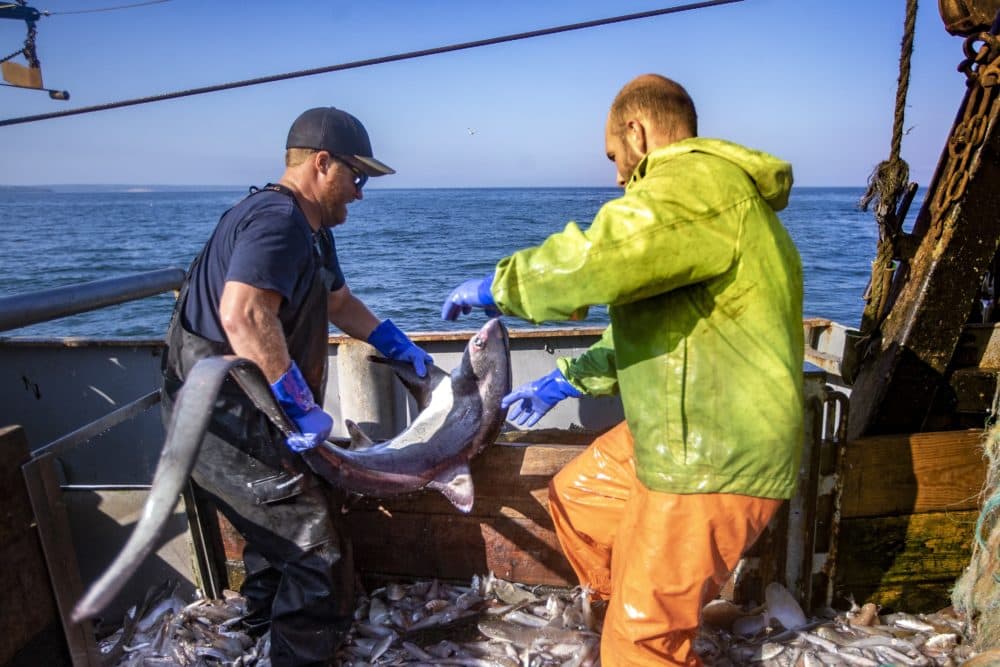
It’s typical for big clean energy projects to be the subject of environmental lawsuits and for opponents to argue that federal regulators erred in their decision to approve them, said Timothy Fox, vice president of ClearView Energy Partners, an energy research firm that is closely tracking these offshore wind cases. But what makes these cases more risky for the offshore wind industry is the fact that they invoke the Endangered Species Act and claim the project will harm North Atlantic right whales.
“The Endangered Species Act can be particularly lethal for project developers,” he said. If a court finds a federal agency violated the National Environmental Protection Act, for instance, it can require that the project analysis be redone. But “the Supreme Court has determined that if a project is going to put an endangered species at harm, that the project can just [be forced to] stop.”
Still, Brad Campbell, president of the Conservation Law Foundation in Massachusetts said he isn’t too worried.
“We don’t think any of those cases have merit,” he said. “They’re being brought either by not-in-my-backyard-types who simply don’t want offshore wind in their viewshed or they’re being fueled by, or their lawyers are being paid by, fossil fuel interests.”
Andrew Doba, a spokesman for Vineyard Wind, declined to comment directly on the litigation, but wrote in an email that “the Vineyard Wind project went through an unprecedented impact review assessment process consistent with legal and regulatory requirements that lasted more than three and a half years."
What about the whales?
In the last year or so, a growing movement of people and government officials have clamored for a pause on offshore wind development out of concern that the industry, particularly the type of sonar it uses to map the ocean floor ahead of a project’s development, is causing an uptick in whale strandings and deaths along the east coast.
But there's no evidence that this is happening.
“At this point, there is no scientific evidence that noise resulting from offshore wind site characterization surveys could potentially cause mortality of whales,” reads a statement on the NOAA Fisheries website. “There are no known links between recent large whale mortalities and ongoing offshore wind surveys.”
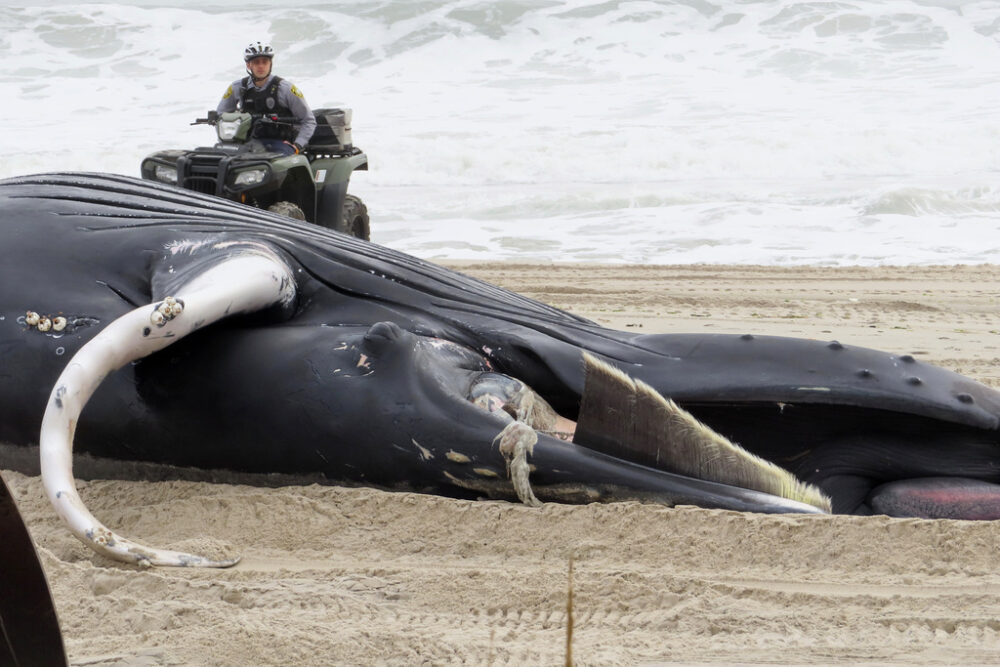
Beginning in 2016, federal scientists documented “an unusual mortality event” among humpback whales and North Atlantic right whales along the east coast. While there’s been no definitive explanation for the mortality spike, scientists have said that the changing climate and warming ocean waters, along with ship strikes and fishing gear entanglements, are likely the main culprits.
But the misinformation about offshore wind continues to spread. In some cases, pro-fossil fuel groups have backed astroturfing campaigns that seek to convince environmentally-minded citizens that offshore wind is bad for the whales.
Former Fox News host Tucker Carlson and former President Donald Trump have also stoked concerns by repeating inaccurate talking points. Just last week, Trump falsely claimed at a South Carolina rally that offshore wind turbines — or “windmills” as he calls them — were causing whale deaths.
“They are driving the whales, I think, a little batty,” he told the crowd.
While there are some legitimate concerns about how offshore wind construction — like any industrial activity in the ocean — could harm endangered whales, federal regulators have determined that any potential impact would be small.
In an environmental review of the Vineyard Wind 1 project, the National Marine Fisheries Service concluded that up to 20 North Atlantic right whales could be “exposed to harassing levels” of noise from construction. This noise could force the whales to expend precious energy swimming away, the review states, but the harm would be minimal and temporary.
The agency also wrote that “no injury (auditory or other) or mortality is expected due to exposure to any aspect of the proposed action during the construction, operations, or decommissioning phases of the project.”
What’s more, federal experts determined that the protective measure Vineyard Wind has promised to put in place during construction will help reduce any potential impacts.
In 2019, the company signed an agreement with several major environmental groups to halt certain construction activities during the winter and early spring when the whales tend to be in the project area, invest in wildlife monitoring, restrict vessel speeds and limit construction noise wherever possible.
Hewett of the National Wildlife Federation said the potential threat to whales and other marine wildlife from offshore wind construction needs to be measured against the threat of not building these projects and failing to create enough clean energy to help combat climate change.
“I will never say that offshore wind has no impact on whales,” she said. “But the degree to which this issue has been completely exploited by offshore wind opponents is really discouraging and really detrimental to the important progress we need to make now on the climate front [to safeguard] wildlife.”
